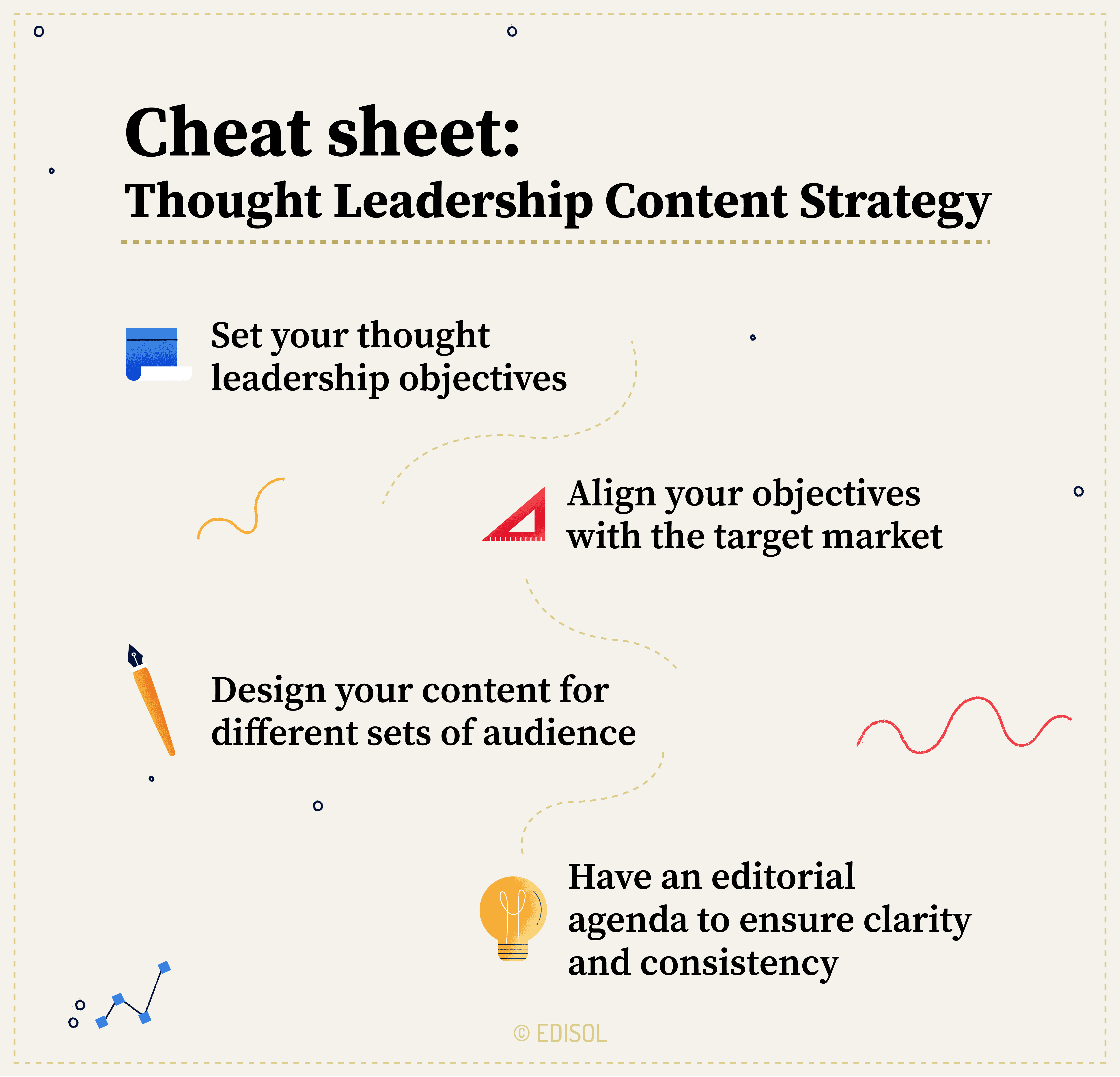Digital marketing has driven thought leaders to emerge across various platforms. Thought leadership content marketing is unlike any other and focuses on intelligent planning.
Thought leadership content marketing is now a buzzword, with almost every content mill aiming to deliver. Leaders want recognition across media channels, and there's no doubt that a thought leadership content strategy can get them there. But, amid the hustle of creating thought-driven content, it is important to consider the bigger picture.
This goes beyond the specifics of the title, target audience - or even the visual context. It is about getting the intent right. After all, every byte of content pushed out is tied to leader in question and the organisation they represent.
Naturally, no run-of-the-mill thought leadership content strategy is going to make the cut, or the first few pages of Google. Poor results are far more damaging than they may seem, as it implies that no one is tuning in.
To steer clear of such marketing nightmares, and truly harness the benefits of thought leadership content marketing and communication, it helps to know the must-haves of any such strategy. Here's insight into these crucial elements.
Pillars Of A Thought Leadership Content Strategy
1. Goal setting is a strategic imperative for research
Just as purpose drives a leader, a well-defined set of goals does the same for a sound thought leadership content strategy. It highlights intent.
A common objective is to position organisations as leaders in innovation or as a new business process in their respective industries. Usually, organisations employ established thought leaders in different niches to meet this goal. However, advocacy groups and trade associations depend less on individual thought leadership, and aim to position the organisation as a whole.
When it comes to large organisations like Google, Apple and Facebook, they usually opt for a hybrid approach, where both individuals such as Larry Page, Tim Cook and Mark Zuckerberg, and the organisation itself become the voices of thought leadership outreach.
For newly-formed organisations, reputation building is a plausible motive for deploying thought leadership content. Small businesses may consider attracting angel investors, and here thought leadership content strategy can be just the right tool to get the desired attention.
A new entrant to the market can also rely on good thought leadership content to establish its position and garner a competitive advantage. By virtue of its nature, thought leadership content marketing is an efficient way to build brand awareness and differentiation in all sectors that a business operates in. So, opting to go this route is recommended.
2. Targeting the right audience
Ideally, thought leadership content should address a niche audience to get the intended response. However, not all thought leadership content needs to abide by this rule. Executives exist across a spectrum and it is worth the effort to develop thought leadership content to target their specific roles.
This way, organisations can promote and establish their representatives as thought leaders across various business verticals. This helps target some of the major arenas like innovation, technology, market positioning, and others, while also striving to build a community for other thought leadership goals.

3. Content design: Visual Context Aids Communication
While whitepapers are one of the preferred thought leadership content types, organisations must consider alternatives. These include:
- Opinion articles
- Industry analysis
- Infographics
- Data storytelling
- Interviews
- E-books
- Press releases
- Case studies
Thought leadership relies primarily on creativity, and it shouldn’t be limited by a specific content format. Moreover, it is important that readers commit what’s being said to memory, and the data finds that people retain about 80% of what they see.
The goal is to deliver value, and with an increasing demand for content that is visually engaging, it is about time to revisit the usual formats. These offer a wide range of experiences to the audience, and is precisely why visual context and content design is so vital! It definitely plays a crucial role, affecting reach and engagement.
Organisations that hit the mark on content design will find it easier in reaching their thought leadership goals. In fact, good visual context helps establish credibility, a highly sought-after quality in such strategies.
On the flip side, thought leadership content created aimlessly, such as using a single design format for all types of content, is likely to face friction. It’s not always about what you have to say, it is about how content is conveyed.
4. Editorial strategy: Mission-critical for efficient management
With well-defined content design protocols and purpose, next comes execution. This relates to the editorial agenda, wherein plans with the associated content calendar are key. At this stage, it is important to note that thought leadership content campaigns can’t be seasonal.
The goal is to build trust and influence opinions in the public eye, and this demands consistency. While there’s no call for churning out content on the daily, as it would defeat the purpose of authenticity, campaigns must span several months with consistency in focus.
With the timeline in place, the next phase can delve into the nuances of content strategy. This often includes:
- Content topics
- Targeting strategies
- SEO practices
- Due dates
- Content syndication
While thought leadership aims to place an organisation as a credible resource for research-based content, the editorial standard needs to be up to the mark to meet this requirement. As a matter of fact, coming up with thought leadership content ideas isn’t the challenge. The tricky part is articulating the thought leader’s insights – and doing it right.
Achieving this quality benchmark is easiest when you partner with an experienced content agency. At Edisol, we believe that a well-crafted thought leadership content strategy goes beyond purpose-driven content and must also nurture the leader’s image with their audience. For measurable results across different thought leadership content types, contact us.




